the workers

sandi mattingly, adaptive re-use technician 1972-1986

Theresa fakete, aide, Union President 1968-1987
“I’ve always loved a challenge and I’ve always liked to work with my hands and being in adaptive equipment gives me the opportunity to do both.
For clients who can get out of bed but not maintain a sitting position, a wheelchair-litter was designed. For a male client who kept sliding out of his wheelchair, causing a safety problem, we adapted a chair to prevent it. It amazed the staff. His parents loved it. It was very satisfying.”
Sandi Mattingly
Sandi, right, and client at Pennhurst
“They would call you ‘mom.’ I don’t know where the word mom came from with them but I don’t care if they were 60 and I was 30, I was mom. I think that’s why most of us called them the kids, because they were like children to you and you got to love them. They make you laugh, not laugh at them but with them. We’d have fun together. You had to have a sense of humor and you had to have a heart or you couldn’t work there, and everybody that worked at Pennhurst had a heart, a big one.
Everybody who ever worked there is going to tell you that any job they took after that it was never like Pennhurst. There will never be another Pennhurst. It’s like a city that loved everybody and everybody was there for that resident and worked towards them and for them and we never realized how involved we were with our heart until they closed it. It was devastating.”
Joyce brunner, Unit 2 aide 1970-1987
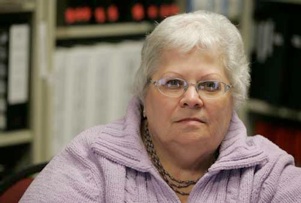
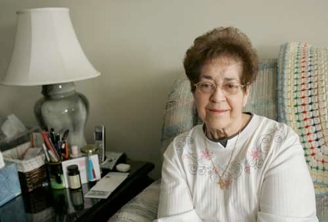
“When I started there, everyone who could work had a job to go to every day. You had a lot of patients there that needed care and you’d have maybe two employees and a lot of working boys.
They worked in the laundry, they worked in the kitchen, and one of the favored jobs was what they called a runner. That was a good job. They also liked to work on the laundry truck or work with the maintenance man. Then when the peonage law was passed they weren’t allowed to work anymore.
A lot of them shouldn’t have been there. Usually someone didn’t want them and they ended up in Pennhurst. I had one client who had braces on his legs and was in a wheelchair and his explanation was that his mother remarried and the stepfather didn’t want the crippled kid around. Today he wouldn’t be there. Today we have special ed and different programs. He did not have to be there.”
Joyce Brunner
j. greg pirmann, special assistant to the superintendent 1969-1986
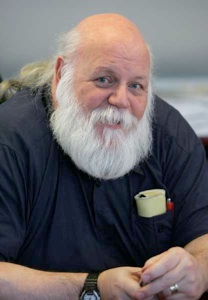
J. Greg Pirmann is a walking wealth of knowledge about all things relating to Pennhurst. After graduating from Villanova University and attending Woodstock, he started out his career as a caseworker with a caseload of 150 women. He later moved on to become the unit director of “Q” Cottage, considered by many to be the worst ward because of the clients’ unpredictability. As special assistant to the superintendent, Greg edited the Database newsletter for the institution and wrote about a wide variety of current and historical practices at Pennhurst.
“The day the place opened it was the wrong answer because no one needs to be sent away from the real world. You don’t learn how to live in the real world by living in an artificial world.
Institutions became what they were because of what people believed was necessary, that it was necessary to lock these people away. Pennhurst was always what society wanted it to be. And then society pretended it wasn’t there.
We need to know this story. We need to see the battle fought by people with disabilities because the battle is not over. We need to get the story out so we don’t repeat the mistakes of the past.”
J. Greg Pirmann
Joyce Brunner worked in “L” Cottage and then moved to Penn Hall with higher-functioning clients who all worked within the institution. She stayed on the same unit until the institution closed in 1987.
Sandi Mattingly started as a hospital aide and later moved on to Occupational Therapy adapting wheelchairs, gurneys and other equipment for handicapped clients who had special needs. She also developed a language board that would fit on a wheelchair and allow clients who could not speak to point at words to communicate with others.
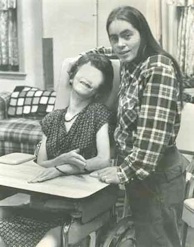



Before Theresa Fakete worked on ward D4 with deaf clients she remembers having to take classes in sign language. When she moved to “T” Cottage and clients that were blind, she had to go through blindfolded training so that she would know what the clients were experiencing. “We were forever in classes. We had to learn what it was like for them, so that we could teach them what to do.”

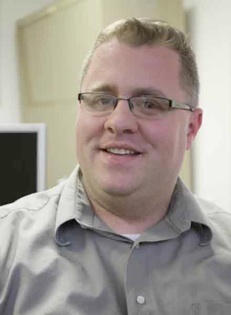
“People didn’t want to leave Pennhurst, even when it was deinstitutionalized. There were horrible memories there; they hated it. But it was the only place they’d ever called home and it was the one thing in their life that was consistent.
So if you take somebody out of the environment that they know you’re just passing them along again and it wasn’t fair to a lot of these individuals. Even though there was horrible abuses and it was a crappy condition to live in it was the only thing they knew.”
Steve Barron
steve barron, former Mental health worker
Steve Barron worked in a group home with two former Pennhurst clients named Joe and Mike. Joe was sent to Pennhurst because of his bad behaviors and Mike because of his autism. Steve remembers that both men exhibited typical “institutional behaviors” like eating very fast and covering their dish as they ate. If you were a slow eater at Pennhurst it was very likely that someone else would steal your food so you learned early on to eat fast and use your hand to cover the plate.
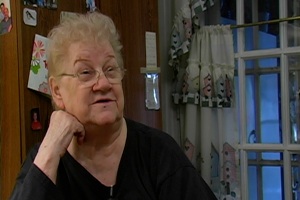
edna plasco, aide 1969-1984
“When I started there, I’d come home and I’d be crying. Mom said, ‘Now what are you crying about?’ I don’t know, I just pity them so much. The whole place just made me sad.
So it was time for me to get up and my mom said, ‘Edna, are you going to go in?’
I said, yeah, I guess. So I went in again and came home crying again. I did this for two weeks. I’d come home crying for two weeks; I wasn’t going to go in no more. And it wound up I was there fifteen years with the same guys.”
Edna Plasco
While Edna Plasco worked with blind men in “T” Cottage she befriended a young man named Raymond Jerry. Raymond couldn’t talk but he would holler and jump up and down when he was happy, especially when Edna would come on for her shift and say, “The mom’s here!” She started signing Raymond out and taking him shopping or to her home where he quickly became like a member of the family.


The Pennhurst Project
© 2010 All rights reserved.